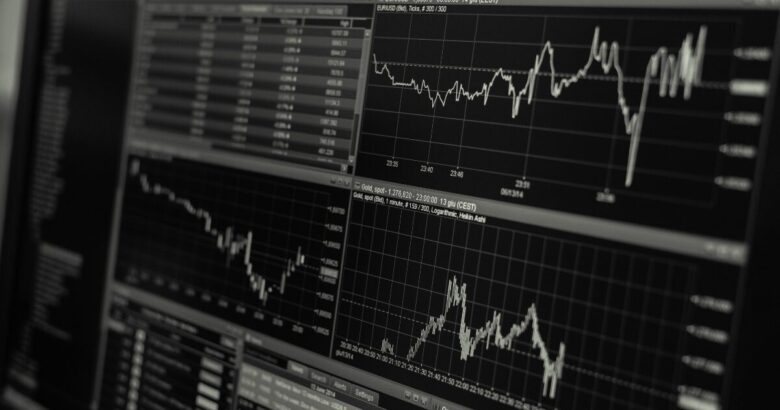Index investing in indexes such as the S&P 500 is becoming increasingly popular.
One of the stock price forecasting models is the geometric Brownian motion model.
The geometric Brownian motion model predicts the future value of an index based on historical average annual returns and risk.
Here, you can check the probability density of expected returns in a Monte Carlo simulation using the Geometric Brownian Motion Model.
Note that the prediction by the geometric Brownian motion model is based on the assumption that the average annual return and risk are the same in the future.
However, there is no guarantee that these will be the same in the future.
Therefore, the forecasts may not always be accurate.
The forecasts are for reference only.
Monte Carlo Simulation of Expected Returns
Usage
Check the Average Annual Return and Risk of the index you wish to check and enter them in the text box.
If you want to check the return when leveraged, enter the multiplier in the Leverage text box.
Once entered, the results of a Monte Carlo simulation of the stock price change will be displayed with the horizontal axis as the number of years elapsed.
You can change the number of patterns of simulation results displayed in the graph with the Number of Displayed Patterns.
For reference, below are the average annual returns and risks of the major indices.
| Return (%) | Risk (%) | Leverage (times) | |
|---|---|---|---|
| MSCI ACWI (All Country World Index) | 8.99 (Last 10 years) | 14.74 (Last 10 years) | 1.0 |
| S&P500 | 9.79 (Last 10 years) | 15.13 (Last 10 years) | 1.0 |
| NASDAQ100 | 17.91 (Last 10 years) | 18.8% (Last 10 years) | 1.0 |
| NASDAQ100 2times | 17.91 (Last 10 years) | 18.8% (Last 10 years) | 2.0 |
Monte Carlo Simulation of The Probability Density of Expected Returns
Usage
It may take some time to display the information because it takes a little time to calculate.
Check the Average Annual Return and Risk of the index and enter them in the text box.
If you want to check the return when leveraged,
enter the multiplier in the Leverage text box.
The graph displays the probability density of the expected return over the specified number of years, with the horizontal axis representing the expected return.
The graph also displays the median and mode of the probability density as lines.
Move the cursor over the graph to display specific values for the median and mode.
Note that increasing the number of simulations will produce a cleaner probability distribution,
but it will take more time.
Formulas Used in Monte Carlo Simulations
Without Leverage
In the model of stock price prediction by geometric Brownian motion,
the stock price \( S \) is assumed to follow the following equation of
geometric Brownian motion when the initial value of the stock price is set to 1.
\[ \mathrm{d} S = \mu S \mathrm{d} t + \sigma S \mathrm{d} B \]
where,
\( \mathrm{d} S \) is the stock price increment
\( \mu \) is the average annual return
\( \sigma \) is the risk (also called volatility or standard deviation)
\( \mathrm{d} B \) is the increment of the Wiener process (random increase or decrease in the stock price)
Solving this equation, the stock price \( S_t \) after time \( t-1 \) to \( t \)
can be expressed as follows using the stock price \( S_{t-1} \) at time \( t-1 \) .
\[ S_t = S_{t-1} \exp \left\{ \left( \mu – 0.5 \sigma ^2 \right) \delta t + \epsilon \sqrt{ \delta t } \sigma \right\} \]
where \( \epsilon \) is a normally distributed random variable with mean 0 and standard deviation 1.
\( \delta t \) is the elapsed time from \( t-1 \) to \( t \) .
The Monte Carlo simulation of expected returns computes
the above equation one day at a time up to the maximum elapsed time.
The Monte Carlo simulation of the probability distribution of expected returns is calculated
for the number of simulation times, one day at a time up to the elapsed time,
and the returns at the elapsed time are displayed as a histogram.
With Leverage
When considering leverage in the geometric Brownian motion model,
leverage \( L \) depends on the average annual return and risk,
so the average annual return \( \mu \) and risk \( \sigma \) are \( L \mu \) and \( L \sigma \) , respectively.
The stock price \( S_t \) after time \( t-1 \) to \( t \) is
\[ S_t = S_{t-1} \exp \left\{ \left( L \mu – 0.5 L^2 \sigma ^2 \right) \delta t + \epsilon \sqrt{\delta t} L \sigma \right\} \]
Median and Mode of Expected Return by Elapsed Years
The median and mode of expected returns by elapsed years are summarized in the following article.



